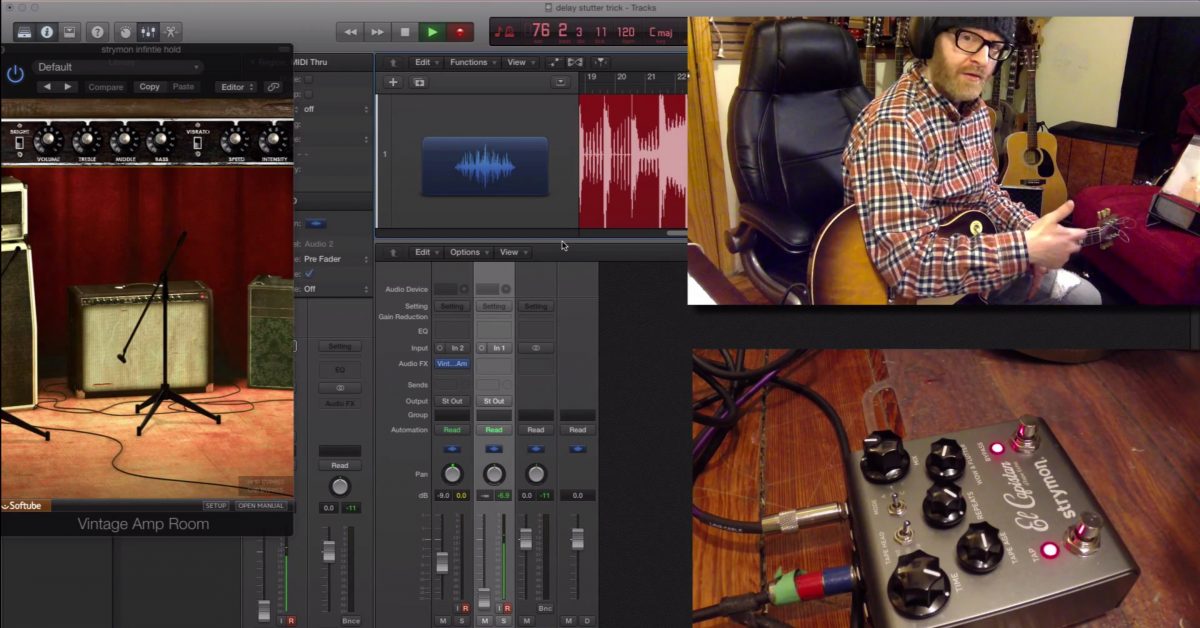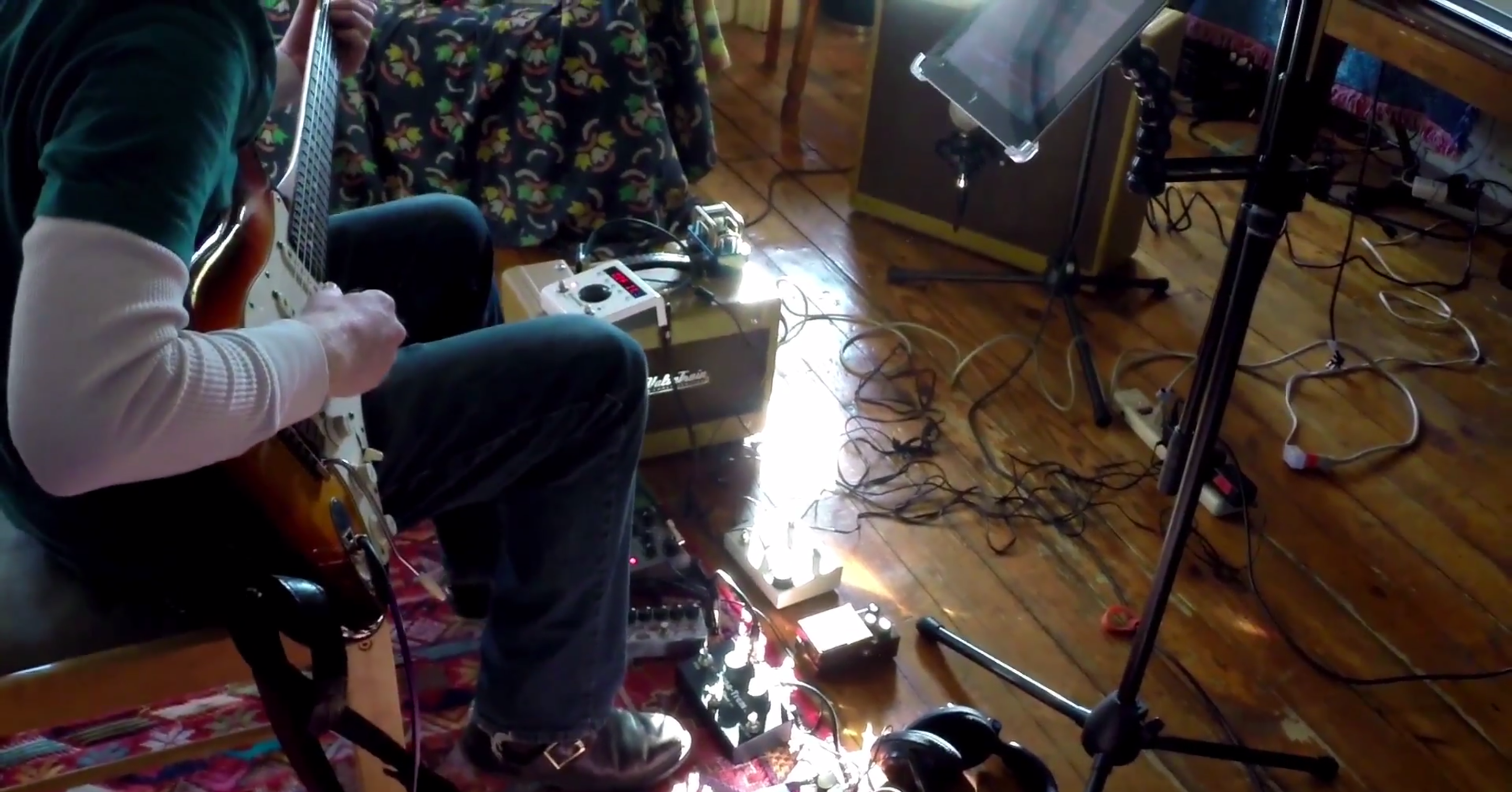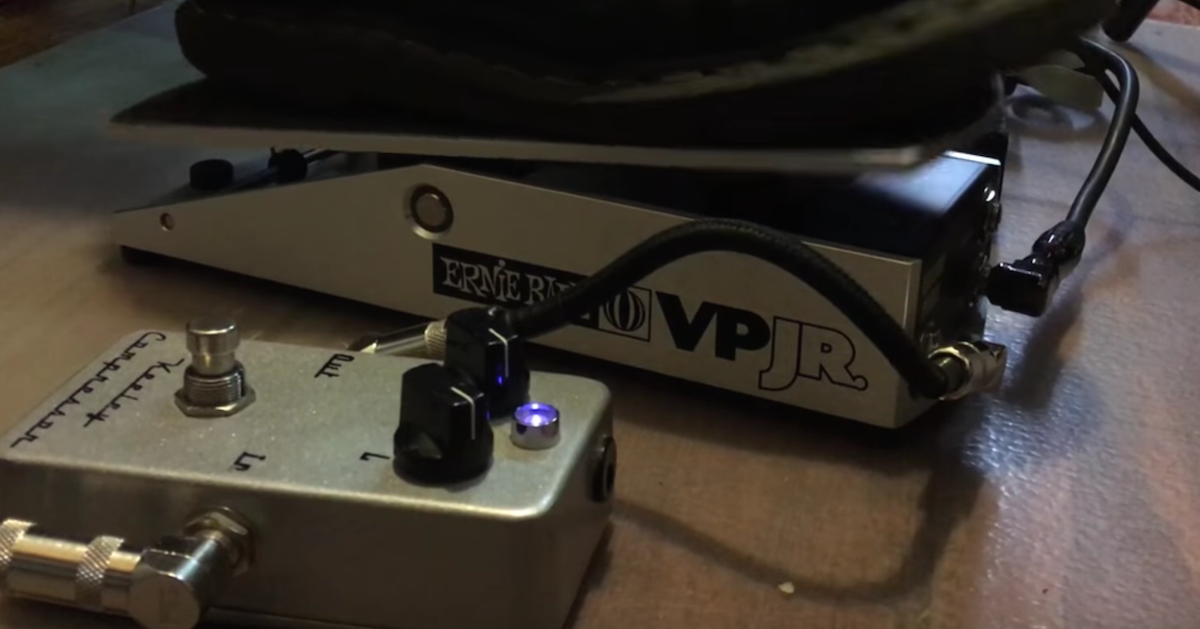Ambient Guitar Effects: Manipulating Chords by Automating Notes
So the Keeley pedal, the compressor, I’m just using that to get some sustain because I’m playing completely clean, so to get some sustain out of the guitar I have the compressor on pretty hot. So just when I play a note — or swell a note it just grabs it.
Now the freeze pedal I use sometimes. If you don’t know what the freeze pedal does, it grabs just a minuscule snapshot of your tone and just holds it like a drone. Almost kind of gets like an organ-y type of sound to it when you grab a note or chord. I’m just gonna be grabbing notes because I’m gonna create chords, right? So we have three chords that I’m gonna be arranging feedback loops for here.
I’m gonna lay out feedback loops for three different chords and from there, I’m gonna automate them in and out. So it means for a G chord I’m gonna lay out the root, 3rd, 5th, and octave and I’m also gonna do that for a C chord and a D chord. After I get all that done I’m gonna go through and I’m gonna automate the intervals, so when your chords change, whenever I need them to change, the feedback loops will change.
In Logic what I did was I set up a bunch of tracks you’ll be able to see here and I labeled it what note and what interval it’s going to be. I’m using an amp simulator on the main track, and that is this Softube Vintage Amp Room. To prevent myself from having 30 instances of this plugin open, I got the sound I really wanted on this first track here that the guitar is going into from my Avid Mbox. From there I set the output of the track to bus one. So each of these following tracks that I set up for the root, 3rd, 5th, octave, are all gonna be set to the input of bus one. Meaning that it’s gonna record the sound that’s coming out of this first track. And I don’t have to have multiple instances of Vintage Amp Room open. Saves some CPU juice.
I’m gonna set up an 8 bar loop. Let me explains hat each of these components does. So the freeze pedal, watch what happens when I hit a note.
[guitar + freeze pedal]
I grab it with the freeze, hands are free, you hear how it sustains that note. A little reed-y, organ-ish. The delay, you can hear it do kind of warbly weird things, distort, alright. I might do a combination of these two. So I might get something cool happening with the freeze pedal.
[guitar + freeze pedal + delay]
I’m gonna set it up now, I’m gonna do the third which is a B note for a G chord. Ok, we’re gonna follow this through with each interval that I want to add to the chord. The 5th, and I might actually change some of the delay settings up here — the times. Ok if I just wanted to listen back to this chord.
Let’s hear all the tracks together that I just recorded. And I just created a 4 bar loop out of the 8 bar loop that I’m just gonna have cycle over and over again and we’re gonna work from there. It’s not completely smoothed out yet but we’re just starting to get the idea together.
[ambient guitar drones]
Kind of just a collage of each thing, tones, textures. As you’ll notice I have recorded a bunch of tracks here and there’s some automation that I was messing around with — moving some of the notes around. Let’s first listen to the notes that would just be in the straight G chord. If I solo any one of these you can hear root, third, fifth, octave, alright. Same thing for a C chord. And I have a D chord over here as well. Now this is different than using a keyboard to create chords with samples on it because what’s unique about this is each one of these loops that were recorded has some inconstancies or imperfections which makes them rub against each other in different ways, different overtones, there’s different speeds that the tape echoes or repeating themselves, and when you combine them together it’s just, it creates a little bit more of an imperfect industrial kind of ambient sound than just using a synth pad. Where it really gets fun is if we pull up a section of the song and we — I’m gonna set up like a G chord and I’m gonna show you a few things that like we can turn it into other chords. Here’s a G chord. With a third. I can very easily turn this into a G-Sus, Sus-4 there right now. Put the 3rd back in. Turn it into a Major 7 by adding the F sharp which is the 13th chord in. Turn that into a 9th chord. Add an A in. 6th chord. So there’s a lot of options if you know music theory that you can play this like an instrument.
—
Overview:
Mark Marshall shows you how you can build and automate your own orchestra of ambient sounds using guitar + effects.
Software/Hardware:
– Logic Pro X
– Fulltone Tube Tape Echo
– Keeley Compressor
– Electro-Harmonix Freeze Pedal






